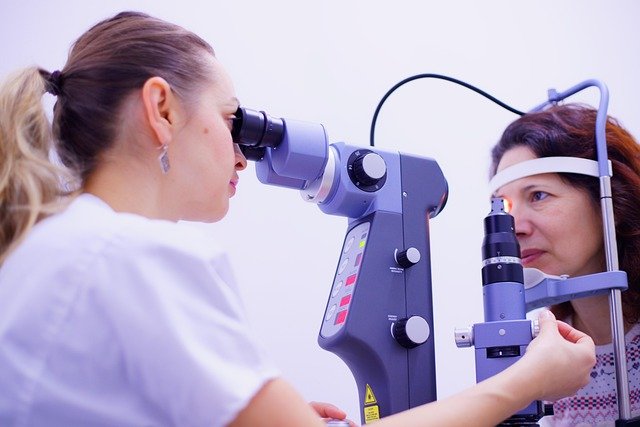Understanding Amyloidosis: Symptoms, Diagnosis, and Treatment Options
Amyloidosis is a rare condition caused by abnormal protein buildup in organs and tissues. Understanding the symptoms—like fatigue, swelling, and shortness of breath—can lead to earlier diagnosis. Learn how to spot signs and when to seek medical attention for this complex disease.

What are the common symptoms of amyloidosis?
Amyloidosis can affect multiple organs and systems in the body, resulting in a diverse array of symptoms. Some of the most common signs and symptoms include:
-
Fatigue and weakness: As protein deposits accumulate in various organs, they can interfere with normal function, leading to persistent tiredness and a general feeling of weakness.
-
Swelling (edema): Fluid retention, particularly in the legs, ankles, and feet, is a frequent symptom of amyloidosis. This swelling can be caused by the protein buildup affecting kidney function or heart performance.
-
Shortness of breath: When amyloid proteins accumulate in the heart or lungs, it can lead to difficulty breathing, especially during physical activity or when lying down.
-
Numbness or tingling: Amyloidosis can affect the peripheral nerves, causing sensations of numbness, tingling, or burning, particularly in the fingers and toes.
-
Skin changes: Some forms of amyloidosis can cause thickening or easy bruising of the skin, particularly around the eyes and on the face.
How is amyloidosis diagnosed?
Diagnosing amyloidosis can be challenging due to its varied symptoms and rarity. The process typically involves:
-
Medical history and physical examination: A thorough review of symptoms and family history, along with a comprehensive physical exam, is the first step in diagnosis.
-
Blood and urine tests: These can help detect abnormal protein levels and assess organ function.
-
Imaging studies: Echocardiograms, MRI scans, and nuclear medicine scans can help identify organ involvement and the extent of amyloid deposits.
-
Tissue biopsy: The definitive diagnosis of amyloidosis is made through a tissue biopsy, where a small sample is examined under a microscope to detect amyloid deposits.
-
Genetic testing: In cases where hereditary amyloidosis is suspected, genetic testing may be recommended to identify specific mutations.
What are the current treatment options for amyloidosis?
The treatment approach for amyloidosis depends on the type and severity of the condition, as well as the organs affected. Some common treatment strategies include:
-
Chemotherapy: Used to suppress the production of abnormal proteins in certain types of amyloidosis, such as AL amyloidosis.
-
Stem cell transplantation: High-dose chemotherapy followed by stem cell transplantation may be an option for some patients with AL amyloidosis.
-
Targeted therapies: Medications that specifically target the amyloid proteins or the underlying cause of their production are becoming increasingly available.
-
Organ transplantation: In severe cases where organ function is significantly compromised, transplantation may be considered.
-
Supportive care: Managing symptoms and organ dysfunction through medications, dietary changes, and lifestyle modifications is an essential part of treatment.
Are there any promising new treatments on the horizon?
Research into amyloidosis treatment is ongoing, with several promising developments:
-
Gene silencing therapies: These aim to reduce the production of amyloid-forming proteins at the genetic level.
-
Monoclonal antibodies: These targeted treatments are designed to remove existing amyloid deposits from organs and tissues.
-
Small molecule drugs: New medications that can stabilize mutant proteins or prevent their misfolding are in various stages of clinical trials.
-
Combination therapies: Researchers are exploring the potential of combining different treatment approaches to improve outcomes.
How can patients manage their symptoms and improve quality of life?
Living with amyloidosis can be challenging, but there are several strategies patients can employ to manage their symptoms and maintain a good quality of life:
-
Follow medical advice: Adhering to prescribed treatments and attending regular check-ups is crucial for managing the condition.
-
Maintain a healthy lifestyle: A balanced diet, regular exercise (as tolerated), and stress management can help support overall health and well-being.
-
Join support groups: Connecting with others who have amyloidosis can provide emotional support and practical advice for coping with the disease.
-
Stay informed: Keeping up-to-date with the latest research and treatment options can empower patients to make informed decisions about their care.
-
Manage specific symptoms: Working with healthcare providers to address individual symptoms, such as pain management or dietary modifications, can significantly improve daily life.
Amyloidosis is a complex and challenging condition, but with early diagnosis and appropriate treatment, many patients can effectively manage their symptoms and maintain a good quality of life. As research continues to advance, new and more targeted therapies offer hope for improved outcomes in the future. If you suspect you may have symptoms of amyloidosis, it’s crucial to consult with a healthcare professional for proper evaluation and guidance.
This article is for informational purposes only and should not be considered medical advice. Please consult a qualified healthcare professional for personalized guidance and treatment.




